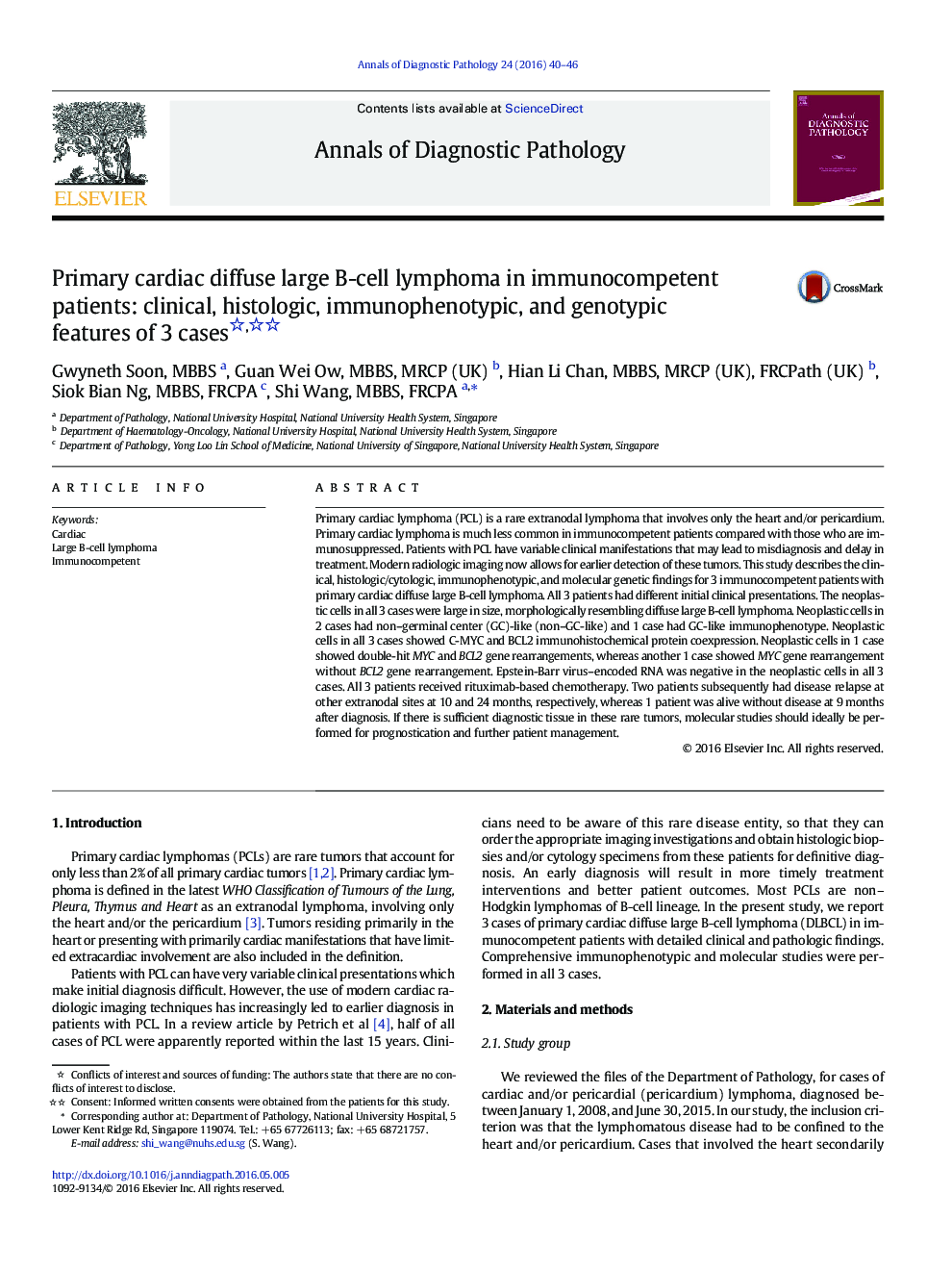| Article ID | Journal | Published Year | Pages | File Type |
|---|---|---|---|---|
| 4129686 | Annals of Diagnostic Pathology | 2016 | 7 Pages |
•This study describes the clinical, histologic / cytologic, immunophenotypic, and molecular genetic findings for three immunocompetent patients with primary cardiac diffuse large B-cell lymphoma (DLBCL). All three cases showed no evidence of EBV infection.•All three cases of showed C-MYC and BCL2 immunohistochemical protein co-expression.•One case showed positive results for both MYC and BCL2 gene rearrangements. One case showed positive result for MYC gene rearrangement, but had no demonstrable BCL2 gene rearrangement.
Primary cardiac lymphoma (PCL) is a rare extranodal lymphoma that involves only the heart and/or pericardium. Primary cardiac lymphoma is much less common in immunocompetent patients compared with those who are immunosuppressed. Patients with PCL have variable clinical manifestations that may lead to misdiagnosis and delay in treatment. Modern radiologic imaging now allows for earlier detection of these tumors. This study describes the clinical, histologic/cytologic, immunophenotypic, and molecular genetic findings for 3 immunocompetent patients with primary cardiac diffuse large B-cell lymphoma. All 3 patients had different initial clinical presentations. The neoplastic cells in all 3 cases were large in size, morphologically resembling diffuse large B-cell lymphoma. Neoplastic cells in 2 cases had non–germinal center (GC)-like (non–GC-like) and 1 case had GC-like immunophenotype. Neoplastic cells in all 3 cases showed C-MYC and BCL2 immunohistochemical protein coexpression. Neoplastic cells in 1 case showed double-hit MYC and BCL2 gene rearrangements, whereas another 1 case showed MYC gene rearrangement without BCL2 gene rearrangement. Epstein-Barr virus–encoded RNA was negative in the neoplastic cells in all 3 cases. All 3 patients received rituximab-based chemotherapy. Two patients subsequently had disease relapse at other extranodal sites at 10 and 24 months, respectively, whereas 1 patient was alive without disease at 9 months after diagnosis. If there is sufficient diagnostic tissue in these rare tumors, molecular studies should ideally be performed for prognostication and further patient management.
